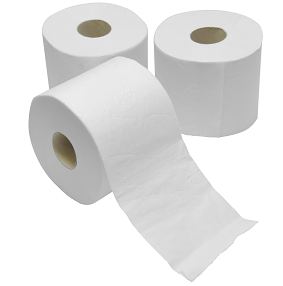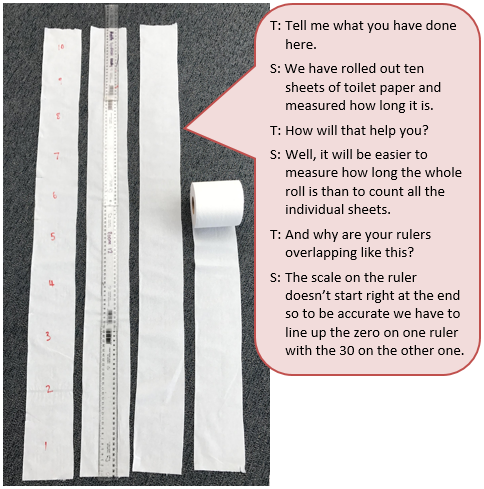How many pieces? (years 7-10)
This counting collections activity engages students in identifying which roll of toilet paper is better value.
This collection can be regarded as a discrete collection to be counted or a continuous collection to be measured. A continuous collection can be estimated, grouped, measured and compared with an awareness of how measurement approximations affect accuracy. Refer to the How many pieces? (years 4-6) if approaching this task as a discrete collection.
Counting collections promotes number sense, and is an essential foundation for students to be successful mathematicians. Recent literature (e.g. Boaler, 2008) suggests that flexible grouping practices best supports equitable opportunities for student learning.
It is important to share the mathematical focus of the task with students. This task addresses content across multiple strands. Provide students with opportunities to develop their own strategy to count or measure efficiently, to work collaboratively, to record their strategies and to share and justify their findings using a variety of representations. Students will develop an awareness that approximated or rounded measurements lead to compounding of measurement errors. This task lends itself to discussions around this idea.
Consider the mathematical language your students are likely to use when measuring and the language you want to develop.
Student agency is promoted if students have choice over how their own approach to finding and recording a solution. Rather than suggesting particular solution methods to students, teachers can use enabling prompts to support students who require assistance. Extending prompts can be offered when students have completed the task to build more sophisticated strategies and understandings.
- Toilet rolls (various brands for comparison)
- Rulers and measuring tapes
- Photocopies of base plates for students to manipulate
Task Introduction
A wondering for mathematical inquiry can be developed by teachers in consultation with their students. For example:
- I wonder which toilet roll is the best value?
Considerations when planning for the task introduction include:
- Do the students understand the context of the task?
- What key mathematical ideas and language do teachers need to clarify with students in order for them to engage with the task?
Student Exploration of the Task
- While the students are exploring the task, listen to their mathematical language and thinking particularly around measurement and approximation.
- If students are struggling to get started, enabling prompts can be offered but only once students have had sufficient time to struggle with the problem themselves.
Examples include:
How many individual sheets are there in this toilet roll?
How long is this toilet roll? Which roll has the most sheets?
Which roll is the longest?
- Extending Prompts can be offered if students finish quickly or find the task easy. They encourage higher order thinking and generalisation within the same task.
Examples include:
What other variables could you consider in your inquiry? (e.g. ply, double length)
I wonder if this roll is really double the length?
Which toilet roll would last the longest?

